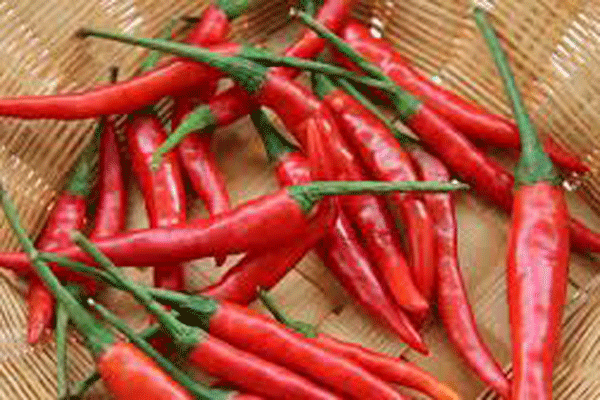
Embracing spicy food was a slow process for me. As a child, I once watched my brother cry after someone led him to eat hot chilli pepper.
gardening with Doreen Badze

I tried to assist him as he ran around maniacally, trying to get the burning sensation out of his mouth. I felt helpless and could only offer several glasses of water, which he gulped down his throat until he could not take it anymore. I felt his pain at that moment and vowed never to be anywhere close to what seemed like a “torture” to my brother. However, hot chilli pepper was not part of our diet growing up and my mother never cooked with it, neither did she grow it. Later in life, living with other nationalities and learning how and what they cooked helped me to embrace hot chilli peppers. Particularly, it was one Nigerian friend who used hot chilli in most of her meals, regardless of the children she had. When I watched her children eat the hot spicy food, that is when I considered to try it and shake off my bad memory of the hot chilli pepper.
What are chilli peppers?
Chilli peppers are fruits that belong to a plant that is in the nightshade family. They mostly have a distinct pretty red colour, even though some varieties come in other colours like yellow, orange scarlet and green. Some refer to them as a vegetable while some call it a spice. They have been reported to have originated from Mexico and are now used throughout the world as food and medicine. India is known to be the world’s biggest producer, consumer and exporter of chilli peppers, hence they feature heavily in their cuisines. The substances that give them their intensity when ingested or when applied topically capsaicin and many other chemicals, are known collectively as capsaicinoids.
Varieties of chilli peppers
There are many known common chilli pepper families and under the capsicum, there is bell pepper, paprika, jalapenos and chiltepin. The popular cayenne and tabasco peppers belong to the capsicum frutescens family. Additionally, the hottest peppers such as habaneros and scotch bonnets top the charts sitting on a scale of 10. After this, there is a whole list of other varieties that are not very familiar with us Zimbabweans. The heat of peppers can be measured on scoville units and also on the scale of one to 10 — 10 being the hottest. For example the popular cayenne pepper is on the hotness scale of nine.
Health benefits of chilli peppers
- Chamisa under fire over US$120K donation
- Mavhunga puts DeMbare into Chibuku quarterfinals
- Pension funds bet on Cabora Bassa oilfields
- Councils defy govt fire tender directive
Keep Reading
Other than chillies being hot, they also possess amazing medicinal properties. The same element that gives them the spicy pungent known as capsaicin contains antibacterial, anti-carcinogenic, analgesic and anti-diabetic properties. It is believed to also reduce bad cholesterol levels in obese individuals. Fresh chilli peppers have an abundance of vitamin C, as well as vitamin A; both antioxidants are essential for our wellbeing. Other minerals like potassium, manganese, iron and magnesium are contained in significant amounts, which help strengthen the antioxidant properties of chilli peppers. By eating chillies, you fight inflammation, colds, vitamin A and C deficiency. The spice can be used as a rub on nerve pain and a sniff of the spray is known to stop migraine headaches. The peppery heat also clears mucus from a stuffed up nose or congested lungs by stimulating secretions.
Selection and storage
Chillies are available throughout the year here in Zimbabwe and therefore, it is best to use them in their raw fresh status taking advantage of all the nutrients. However, they can also be used dry and stored in the refrigerator as fresh for about a week. Avoid and discard any moulded chillies. Powdered chilli keeps well at room temperature while maintaining many of their medicinal properties.
Tips for preparing and cooking
The compound capsaicin can cause a severe burning sensation if it touches your skin, lips or gets in contact with your eyes. After handling the hot chillies, hands need to be washed thoroughly or one can wear thin rubber gloves. Also measure spice volume by tasting to adjust degree of hotness. If you cannot take the heat, milk can cool it off. A protein in milk called casein can help douse capsaicin’s fire.
This week in our nursery, we have the following seedlings; lettuce commander, covo hybrid rugare, cabbage star 3316 and many more ready in two weeks.
Tuta Absoluta update
The following are some of the pesticides being used to control Tuta Absoluta according to Charter Seeds; Belt, Levo, Steward, Ampligo 150ZC, Coragen (Rynaxypyr). Happy gardening week!!
Doreen Mutobaya Badze is a retired nurse and passion-driven gardener. She can be reached on Cell: 0779 730 880 or 16 Metcalf Road, Greendale, Harare. Email: [email protected] Facebook Page: Badze Garden Nursery











